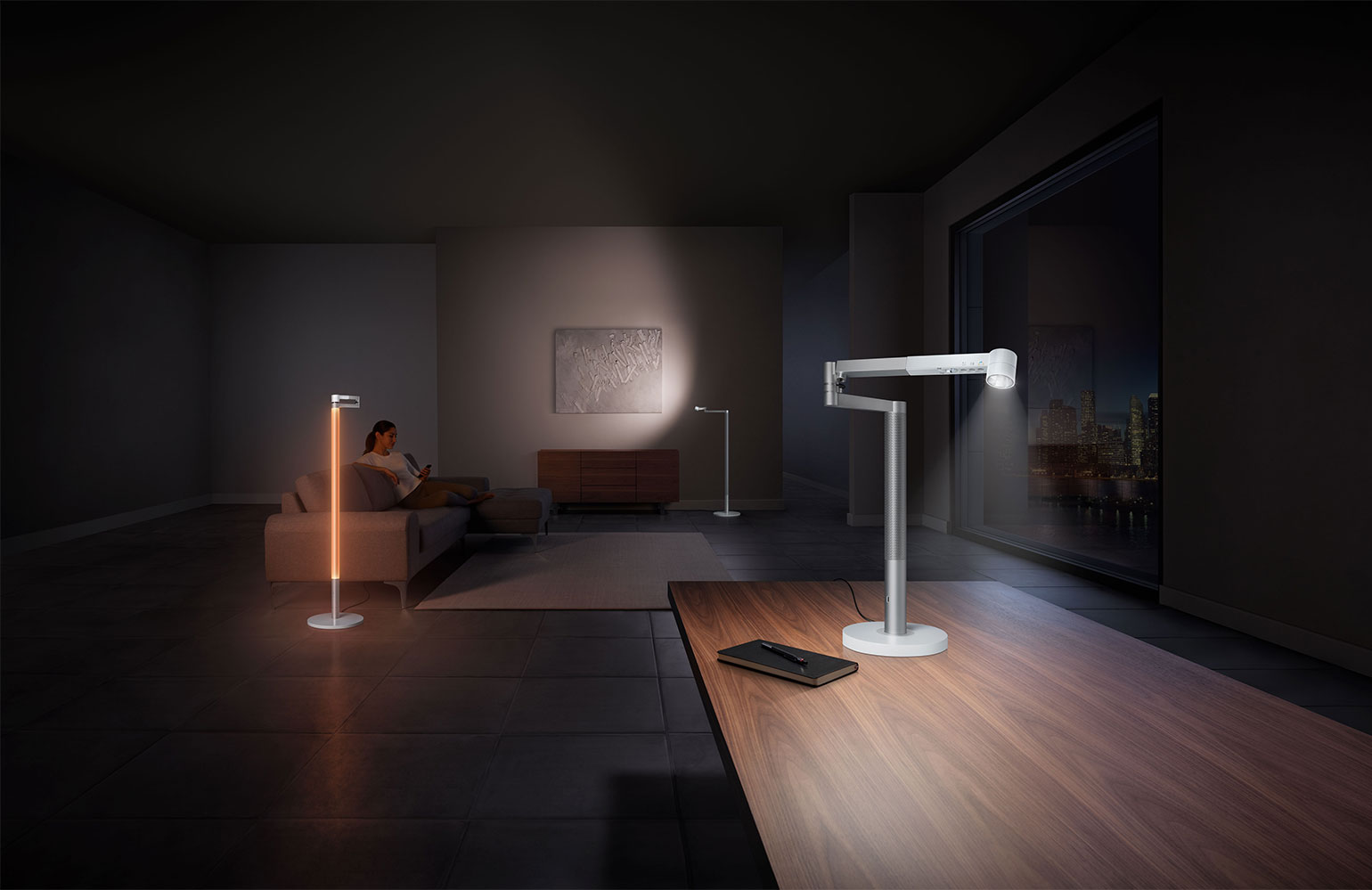Jake Dyson on the future of lighting design
Designer Jake Dyson reflects on the new Dyson Lightcycle Morph and how technology can light up your life without realising it

The new Dyson Lightcycle Morph puts about as much technology into the humble lamp as it can handle. Overseen by lighting designer Jake Dyson, the Lightcycle Morph is smart, multi-functional, and equipped with a huge number of sensors. The upshot of all this intelligence is that the angular metal light tracks natural daylight – right down to where you are on the planet – and adapts itself to your needs, whether it's as a task light, a feature light or even ambient light. We spoke to Jake Dyson about the science of lighting and how technology can improve your illumination without you even realising it.
Wallpaper*: What are the main areas of innovation left for lighting technology?
Jake Dyson: The future of lighting needs to be human-centric. Since the introduction of artificial light, the way we light our homes has been a means to an end. The objective being simply to light a space with little regard for the people within it. But we now know – thanks to our in house and medically published research - that light affects us in many ways we are not even aware: through glare, flicker, but most crucially our body clock. Education and ownership of the light sources in our home is where the innovation truly lies – the utopia being to create personalised whole-home circadian lighting environments.
W*: Are there great leaps forward in efficiency still available?
JD: The key to efficiency is in highly purposeful design, to create products that last - without planned obsolescence. LEDs are already incredibly efficient, the missing link was to make them equally long-lasting. This is why I invented heat pipe technology. Inspired by satellite cooling mechanisms, it enabled us to create a light that was both energy efficient and had light quality to last a lifetime.

W*: How does the physical design of the lights support these innovations?
JD: Our research with some of the world’s leading lighting designers showed us that to properly illuminate a domestic or office environment, you need four different lighting formats. An indirect light for blanket illumination of a space; task light for precision work; feature lighting to accent artwork or home features; and ambient light, a global light source that glows like firelight. This is what we created with the Dyson Lightcycle Morph. A series of ball bearings enables 360-degree manoeuvrability in the arm of the light to achieve all of these lit effects.
W*: What materials are used and why?
JD: The interplay of technology, engineering and design is central to the Dyson Lightcycle Morph. The ambient stem is a precision-engineered polycarbonate-aluminium composite. The polycarbonate has high optical efficiency which means light elegantly cascades down the length of the stem, interestingly the same material used in riot shields it reinforces the entire light. The outer layer is rotationally punched aluminium, just 0.7mm thick.
W*: Is Dyson working on any other areas of domestic design that you can hint at?
JD: We aren’t necessarily focused on domestic design, but instead we are focused on creating technology that can create a more natural and healthier home environment. Lighting is just one strand of this – where we aim to mimic the sun to create a less jarring, less artificially-lit space.

Portrait of Jake Dyson
INFORMATION
Wallpaper* Newsletter
Receive our daily digest of inspiration, escapism and design stories from around the world direct to your inbox.
Jonathan Bell has written for Wallpaper* magazine since 1999, covering everything from architecture and transport design to books, tech and graphic design. He is now the magazine’s Transport and Technology Editor. Jonathan has written and edited 15 books, including Concept Car Design, 21st Century House, and The New Modern House. He is also the host of Wallpaper’s first podcast.
-
 This new Vondom outdoor furniture is a breath of fresh air
This new Vondom outdoor furniture is a breath of fresh airDesigned by architect Jean-Marie Massaud, the ‘Pasadena’ collection takes elegance and comfort outdoors
By Simon Mills
-
 Eight designers to know from Rossana Orlandi Gallery’s Milan Design Week 2025 exhibition
Eight designers to know from Rossana Orlandi Gallery’s Milan Design Week 2025 exhibitionWallpaper’s highlights from the mega-exhibition at Rossana Orlandi Gallery include some of the most compelling names in design today
By Anna Solomon
-
 Nikos Koulis brings a cool wearability to high jewellery
Nikos Koulis brings a cool wearability to high jewelleryNikos Koulis experiments with unusual diamond cuts and modern materials in a new collection, ‘Wish’
By Hannah Silver